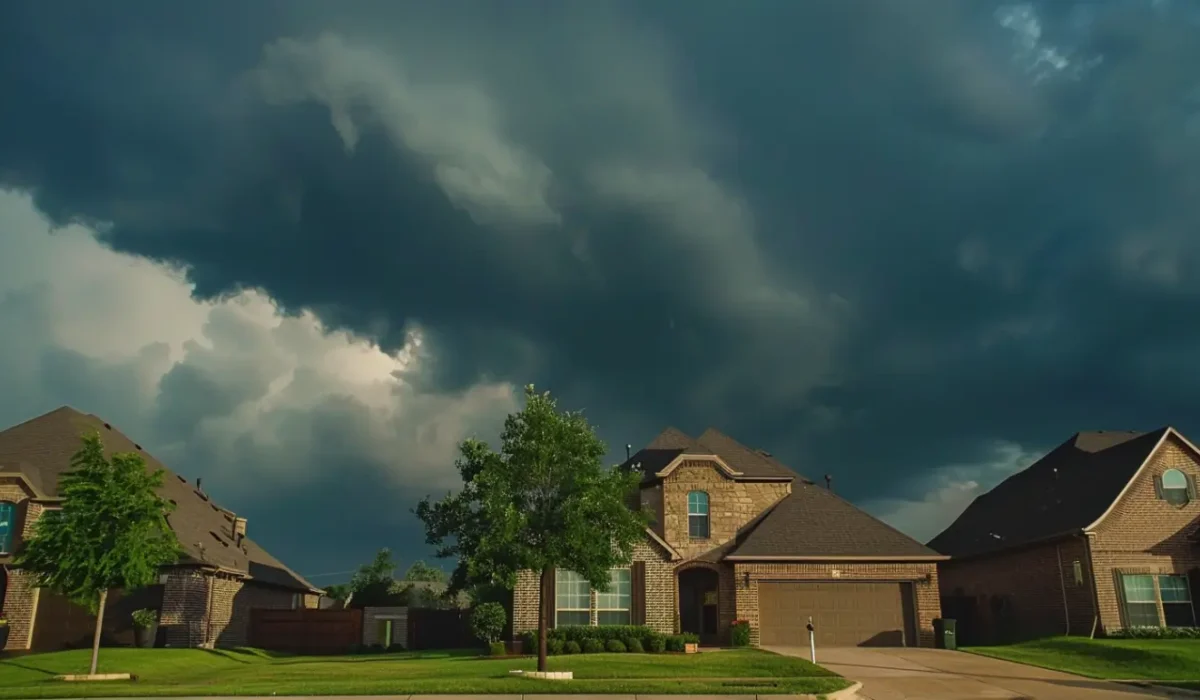Your roof does more than just top off your home—it shields your family and property from the extreme and unpredictable elements that come with living in Grapevine, TX. From blistering sun and hailstorms to high winds and torrential rain, Texas weather is no joke. To keep your home secure and your roofing system in good shape year-round, taking proactive measures is critical.
Here’s a comprehensive guide on how to protect your roof from everything the Texas skies can throw at it—season after season.
Understand the Weather Threats in Grapevine
The first step to roof protection is understanding what you’re protecting it from. In Grapevine, homeowners must contend with:
- Intense UV exposure during long, hot summers
- Sudden hailstorms in spring and summer
- Heavy rainfall with flash flooding risks
- High wind gusts, especially during thunderstorms
- Winter cold snaps that bring freeze-thaw damage
Each of these elements puts stress on your roofing materials in different ways—causing them to crack, loosen, warp, or wear out prematurely if not maintained.
Schedule Regular Roof Inspections
A simple inspection once or twice a year—especially after major weather events—can prevent minor problems from becoming major repairs. A roofing professional can:
- Spot damaged or missing shingles
- Check flashing, vents, and seals for leaks
- Look for early signs of water intrusion or structural weakness
- Recommend any preventive maintenance needed
In Grapevine, TX, homeowners trust KangaRoof for thorough, expert roof inspections and long-term protection strategies. KangaRoof is known for their detail-oriented service and certified expertise as both an OC Preferred and Emerald Premium Contractor, making them one of the most reliable roofing names in the region.
Invest in Durable, Texas-Resistant Materials
If your roof is aging or showing signs of damage, consider upgrading to materials specifically designed for the Texas climate:
- Impact-resistant shingles (Class 4) can withstand hail
- Reflective roofing reduces heat absorption and energy bills
- Metal roofs offer durability and better wind performance
- Composite shingles balance aesthetic and toughness
Modern roofing products are tested to endure extreme conditions and are often backed by extended warranties, adding long-term value and peace of mind.
Keep Gutters and Downspouts Clean
When gutters get clogged with leaves or debris, water can’t flow properly off the roof. It backs up under shingles, damages fascia boards, and causes mold and rot in attic structures.
Protect your roof by:
- Cleaning gutters at least twice a year (or after major storms)
- Ensuring downspouts extend several feet from the foundation
- Installing gutter guards if your property has nearby trees
Effective drainage is one of the simplest ways to prevent water-related roof damage.
Trim Overhanging Trees and Branches
Tree limbs too close to your roof can scrape shingles, drop debris into gutters, and pose a risk of falling during storms. Trim back any branches that come within six to eight feet of the roofline to:
- Reduce shade that traps moisture
- Prevent impact damage from limbs during high winds
- Minimize leaf and twig accumulation on the roof surface
This not only protects your roof but also reduces the likelihood of pest infestations in attic spaces.
Check and Maintain Flashing and Sealants
Flashing protects the most vulnerable areas of your roof—around vents, chimneys, skylights, and valleys. Over time, sealants can dry out or crack, allowing water to seep beneath the surface.
A professional roofer can:
- Re-caulk worn flashing
- Replace corroded or lifted metal
- Inspect vent boots and roof penetrations for weakness
This is a low-cost maintenance step that can save thousands in potential water damage.
Ventilate and Insulate Your Attic
An often-overlooked component of roof protection is what’s happening beneath the shingles—in your attic. Without proper airflow, attic heat builds up in the summer, baking the underside of your roof. In winter, poor ventilation can trap moisture, leading to condensation, mold, and material breakdown.
Make sure your attic has:
- Balanced intake (soffit) and exhaust (ridge) vents
- Sufficient insulation to prevent heat transfer
- No signs of dampness, mold, or animal activity
Good attic airflow is essential for prolonging the life of your roof and improving home energy efficiency.
Be Ready for Storms
Texas storms don’t always give advance warning. Have a preparedness plan that includes:
- Keeping tarps on hand in case of damage
- Saving your roofer’s contact information in your phone
- Photographing your roof for insurance documentation
- Reviewing your homeowner’s policy coverage for hail and wind
After a storm, act fast to inspect your roof for visible damage or leaks.
When in Doubt, Call the Pros
While DIY inspections can help you catch obvious issues, many roof problems go unnoticed without a trained eye. Having a trusted roofer perform seasonal evaluations can prevent major damage and save you money.
KangaRoof offers professional inspections, repairs, and full installations using high-performance roofing systems designed for Texas conditions. Their team in Grapevine understands how to defend your home against every weather challenge the state brings.
Final Thoughts: Protection Starts with Prevention
The best way to keep your roof protected from Texas weather is to take action before problems begin. With consistent inspections, smart material choices, and help from experienced professionals, your roof can provide decades of worry-free protection.
Grapevine homeowners don’t have to face the elements alone. With KangaRoof’s expertise and service, your home will always be one step ahead of the storm.
Read also our blog: Streamlining Your Commercial Roof Installation Process
